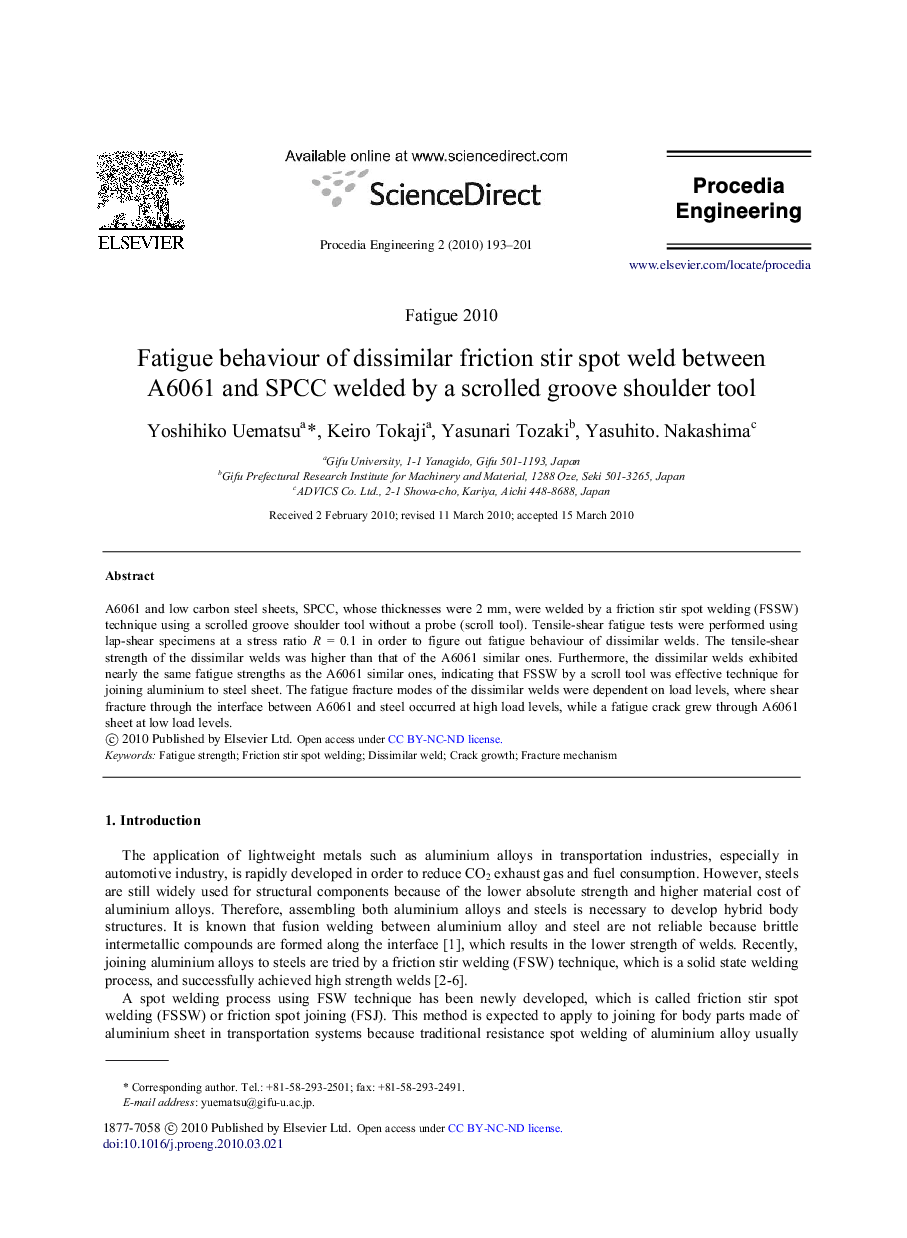| Article ID | Journal | Published Year | Pages | File Type |
|---|---|---|---|---|
| 864608 | Procedia Engineering | 2010 | 9 Pages |
A6061 and low carbon steel sheets, SPCC, whose thicknesses were 2 mm, were welded by a friction stir spot welding (FSSW) technique using a scrolled groove shoulder tool without a probe (scroll tool). Tensile-shear fatigue tests were performed using lap-shear specimens at a stress ratio R=0.1 in order to figure out fatigue behaviour of dissimilar welds. The tensile-shear strength of the dissimilar welds was higher than that of the A6061 similar ones. Furthermore, the dissimilar welds exhibited nearly the same fatigue strengths as the A6061 similar ones, indicating that FSSW by a scroll tool was effective technique for joining aluminium to steel sheet. The fatigue fracture modes of the dissimilar welds were dependent on load levels, where shear fracture through the interface between A6061 and steel occurred at high load levels, while a fatigue crack grew through A6061 sheet at low load levels.
